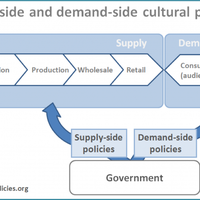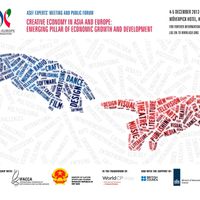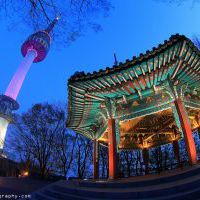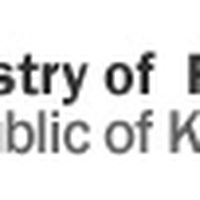Korea | An introduction to Cultural Policy - Part II
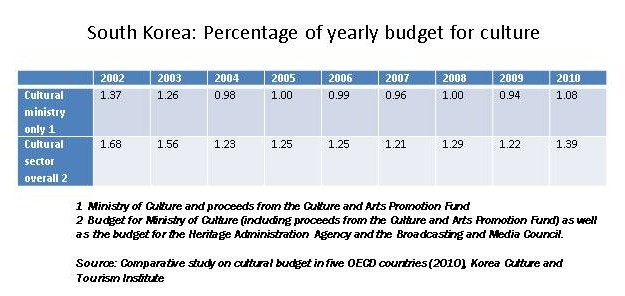 By Kiwon Hong
By Kiwon HongSouth Korea is among the first Asian countries whose cultural policy profile has been commissioned for the global cultural research platform, WorldCP-International Database of Cultural Policies (worldcp.org). In this article, Kiwon Hong, who is also the author of the upcoming cultural policy profile of South Korea, sets out the historical development of the country’s cultural policy priorities.
In this article, the final of a two-part series, Kiwon Hong traces the development of cultural policy in South Korea from the 1990s onwards, when focus moved from regulation to autonomy, from central to local and from producer to consumer.
1990s: From regulation to autonomy
It was only in the 1990s that cultural policy came to hold as an independent policy field, both nominally and practically. A nationally renowned writer, Rhee Uh-Ryung, took the first ministry position, in a symbolic move to represent professionalism in the arts and culture. This was the first time in the history of cultural policy that a civilian-professional figure took the lead in a newly-formed Ministry of Culture to manage the independent field. The year 1994 marked the nominal beginning of democratic government that drew a line away from the authoritative military government in the past. Policy focus moved from regulation to autonomy, from central to local, from producer to consumer, and from division to unification.
The financial crisis of Korea in 1997 served as a turning point to redirect cultural policy and administration towards a market-oriented one. Cultural industries gained substantial attention. Along with the interest in the creative sector worldwide, this was seen as a potential new source of producing wealth. The rapid growth in the IT sector and its clientele, the cultural content industry (especially the gaming industry) achieved significant growth, not only locally but also in international market.
Cultural policy issues in the 21st century
It could be said that at the turn of 21st century, changes in global economic environment have greatly affected policy direction in the cultural sector. As the interest in the arts as ‘creative industry’ or ‘cultural industry’ increased worldwide, culture came to be seen as an important factor both in the life of human beings and as an economic means. The cultural sector as a whole was regarded as essential groundwork for every developmental aspect of society and economy. Continuous effort has been taken to maintain the standard of ‘1% for culture of national budget’.
[caption id="attachment_20728" align="alignleft" width="625" caption="South Korea: Percentage of yearly budget for culture"]
Balancing commercial and public interests
Cultural policy issues in contemporary Korea could be summarized into three main subject areas. How to make policy balance between the commercial drive and public aspect of culture is one crucial area. Support for cultural industry has shown a great leap recently. It is centered around developing technology related to the culture and content industry. Actual subsidy is aimed at supporting infant industries or developing human resources. Contradictory to common assumption about the spread of Korean popular culture in Asia that could have been an outcome of governmental support, those two have no direct linkage in policy terms. Several fields within cultural industries such as online gaming, popular music (K-pop) and television dramas do overwhelmingly represent the cultural industry sector. It is true that success stories in this field trigger more interest in terms of economic impact, domestically and internationally, which buttresses justification for public subsidy requests. However, it remains a big question as to how and to what level the government should act on this matter with commercialized culture increasingly becoming an inevitable component of cultural life.
Enhancing the cultural welfare of citizens
The second issue is how to enhance the cultural welfare of citizenry. Cultural policy has taken two steps to tackle this issue. Cultural welfare cannot be achieved solely by enriching the single side of demand or supply. Maximizing opportunities of encounter between the two has been supported through arts education programmes and cultural vouchers. Legislation to promote arts and cultural education was enacted in 2007. Government funding for placement of ‘arts educators (artist)’ in schools and ‘artist as teachers (TA)’ programme has escalated. More recently, arts and cultural education have come to be regarded as core themes of ‘social education’ and ‘education of lifetime’. Arts and cultural education policies have been initiated based on the belief and evidence that an earlier stage of life cycle act as a stable link between demand and supply.
Another policy within the comprehensive boundary of enhancing cultural welfare is the cultural voucher programme, especially the aftermath of the worldwide financial crisis of 2008 aggravated the economic condition of socially-excluded classes. Various sources have been mobilised to finance the policy. The National Lottery Fund, proceeds from the National Arts and Culture Fund, local government budgets and private contributions form the main components. Details of policy description have evolved so as to minimize stigmatising effects. Supporting diversified supply has also been attempted to gain some balance in this kind of consumer sovereignty system.
Acknowledging multiculturalism
Acknowledgment of cultural diversity and multiculturalism issue is one of the unanticipated phenomena in the cultural policy scene in South Korea. Given the longstanding tradition of emphasising national culture and its homogeneity, migration and its cultural impact needed to be coped with in regard to the existing value system. It was not only a matter of economic or socio-geographical problems. Ratification of the UNESCO Convention on the Diversity of Cultural Expressions (2005) was timely enough to look at these local changes in the global context. It is the cultural sector’s responsibility to steer proper policy discourse in this regard.
There has also been consideration around policy issues such as the advancement of IT and its impact on cultural life; and, cultural policy correspondence to the unification of Korea. However, the fundamental mission of cultural policy in Korea, considering its centralised and state-oriented system, may lie in inspiring public participation towards the enjoyment of cultural life.
Kiwon Hong is Associate Professor at the Graduate School of Public Policy and Industry, Sookmyung Women’s University, South Korea. She also serves as Director of the Cultural Policy and Administration Programme at the School.
Links and resources to information on Korean cultural policy
Read Part I of this artcle at: https://culture360.asef.org/magazine/korea-an-introduction-to-cultural-policy-part-i/
Similar content
12 Jul 2011
posted on
27 Nov 2013
18 Jul 2016
posted on
17 Aug 2017
posted on
04 Feb 2016

